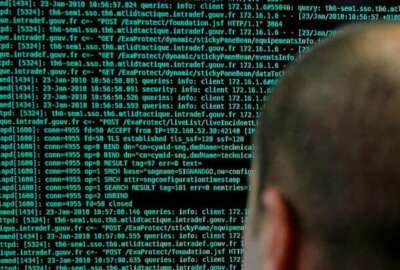The Department of Defense is naming its chief information officer as the acting head of an office that will oversee its data and artificial intelligence operations.
DoD’s Chief Information Officer, John Sherman, will serve as the acting Chief Digital and Artificial Intelligence Officer (CDAO), while the agency’s search for a permanent pick remains ongoing.
The CDAO will lead DoD’s chief data officer, the Joint AI Center and the Defense Digital Service.
Sherman told reporters on Wednesday that the restructuring of these offices will give DoD “end-to-end” cohesion on everything from data collection and curation to advanced analytics that will give the agency an advantage in decision-making and operations.
“It really is a collective ecosystem. We had the parts of it, but [we’re] putting it together in a way we haven’t before to deliver that decision advantage that our leaders need,” Sherman said.
The CDAO reached initial operating capability on Tuesday, and will reach full operating capability by June 1.
Deputy Defense Secretary Kathleen Hicks, in a memo posted Wednesday, said the CDAO will lead DoD’s strategy and policy on data, analytics and AI, now that it has reached initial operating capability.
“The Department of Defense must become a digital and artificial intelligence-enabled enterprise capable of operating at the speed and scale necessary to preserve military advantage,” Hicks wrote. “The Chief Digital and Artificial Intelligence Officer and its supporting Office (OCDAO) are charged with ensuring it does.”
The memo clarifies that the CDAO is considered a principal staff assistant within the Office of the Secretary of Defense. A second memo clarifies how the CDAO will interact with six other DoD senior executives.
Beyond its oversight of the CDO, JAIC and DDS, the CDAO will also have control over the resources and personnel associated with DoD’s Comptroller and Office of Advancing Analytics “to the extent permitted by current law.”
The CDAO will also assume responsibility for Advana, DoD’s big-data platform for advanced analytics. The Advana platform originated within the DoD comptroller’s office, and deliver improved data and analytics for audit purposes.
The platform, however, has evolved beyond financial management to support agency operations more broadly.
“Advana’s capability has grown considerably in just a few short years. It is now the preeminent analytic platform for a range of enterprise-level use cases, from executive analytics to business health metrics, to logistics and readiness needed for day-to-day force management,” a senior defense official said.
The official said bringing DoD’s data analytics and AI capabilities under one office mirrors a leading practice from top technology companies.
“The rationale for including Advana within CDAO is simple: Most value from data is extracted via analytics, and analytics are a foundation for AI development. CDAO’s efforts to enhance AI adoption will be much improved once based on a solid foundation of data analytics,” a senior defense official said.
The Under Secretary of Defense for Personnel and Readiness will still lead DoD talent management and personnel programs, in addition to training and education. The CDAO, however, will “serve as an advocate for DoD’s digital workforce,” and may have an expanded role in digital talent management once it reaches full operational capability.
CDAO will serve as the department’s senior official responsible for strengthening the integration of data analytics, digital solutions and AI functions across the department.
A senior defense official said the CDAO’s office will include about 200-to-300 personnel from different agency components and will have an initial budget of about $500 million.
The CDAO organization will go through program and budget planning as a whole as part of the fiscal 2024 budget cycle.
The restructuring will require some input from Congress. DoD’s chief data officer, as required by the FY 2020 National Defense Authorization Act, is based out its CIO’s office, and through the CIO, must report to the defense secretary and deputy defense secretary.
Hicks, in the memo, said the CDO will “be operationally aligned to the OCDAO,” and the CDO’s supporting office will transfer over to the OCDAO.
Meanwhile, the memo states CDAO will draft a legislative proposal that would allow the CDO to report directly to the CDAO.
Hicks is also directing the CDAO to conduct a review of authorities and governance structures associated with data analytics and AI by May 1.
A senior defense official said the new role will elevate the importance of these issues to the defense secretary, the deputy secretary and other top DoD executives.
“The top priority is to tap the unique strengths of the CDAO’s component organizations while creating greater performance from the sum of their parts,” the official said.
Sherman said he will remain “laser-focused” on his current CIO duties, which include cybersecurity and digital modernization, while serving as acting CDAO.
“I’m honored to be able to help get this organization stood up, again, while performing my chief information officer duties,” Sherman said.
Copyright
© 2024 Federal News Network. All rights reserved. This website is not intended for users located within the European Economic Area.






